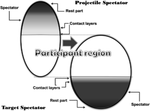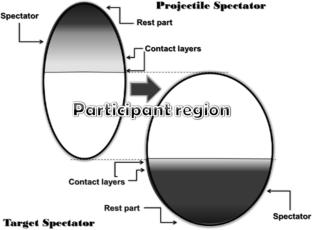Emission characteristics of the slowest target protons produced in the interaction of \(^{84}Kr\) nuclei with emulsion nuclei at 1 A GeV
Abstract
Nuclear fragmentation and its possible connection to a critical phenomenon or phase transition have been the subject of intense theoretical and experimental research on the interactivity of relativistic heavy nuclei. Relativistic heavy-ion collisions enable studies of the extended state of matter at density and temperature extremes only achieved in the hot early Universe. A significant barrier to knowing the mechanism of nucleus–nucleus interactions is the study of the processes that take place in the spectator and participant regions of interacting nuclei, and in particular, the interplay between these processes. In the present work, we have studied the multiplicity distribution of the slowest target fragments (black particles), and their dependence on the interaction of different target nuclei of emulsion. We have also study the correlation of the multiplicity distribution as a function of the collision geometry. The results are compared with other experimental data as per availability. This study reveals a striking relationship between the target fragmentation processes and collision geometry with multiplicity distributions.



 求助内容:
求助内容: 应助结果提醒方式:
应助结果提醒方式:


